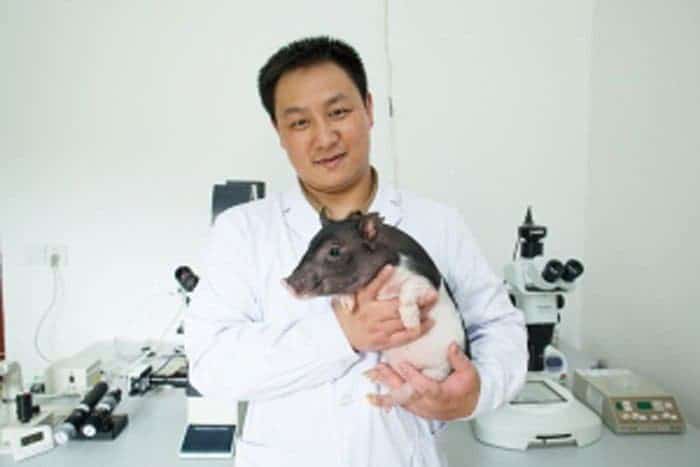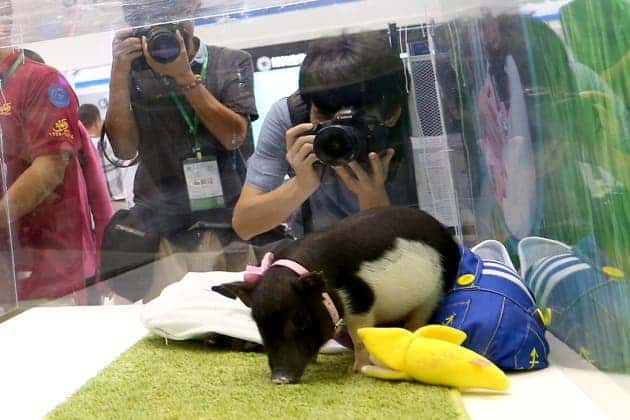Chinese researchers have genetically modified pigs to grow about as big as a medium-sized dog, and they will soon go up for sale, the Beijing Genomics Institute (BGI) announced last week. Many researchers have expressed concerns about using such advanced techniques for such frivolous purposes, and personally, I feel like this could cascade onto many other problems – despite their undeniable cuteness.
BGI in Shenzhen, the genomics institute that is famous for a series of high-profile breakthroughs in genomic sequencing, originally created the micropigs as models for human disease. Unlike rats for example, pigs have much more in common to human physiology, which makes them a much more useful model. But their large size brings along many logistic and financial problems. Bama pigs, which weigh 35–50 kilograms, have often been used in research – but Chinese researchers engineered them to get even smaller.
The animals grew up to 15 kilograms, and this made really attractive for the general public – who wanted them as dog-like pets; researchers paid attention to the public demand, and a week ago, on 23 September, at the Shenzhen International Biotech Leaders Summit in China, BGI revealed that it would start selling the pigs, starting at $1600. Furthermore, in the future, customers will be offered pigs with different coat colours and patterns, which BGI says it can also genetically engineer.
But the alarm signals are already being raised.
“It’s questionable whether we should impact the life, health and well-being of other animal species on this planet light-heartedly,” says geneticist Jens Boch at the Martin Luther University of Halle-Wittenberg in Germany. Boch helped to develop the gene-editing technique used to create the pigs, which uses enzymes known as TALENs (transcription activator-like effector nucleases) to disable certain genes.
The decision to sell these pigs as pets also surprised Lars Bolund, a medical geneticist at Aarhus University in Denmark who helped BGI to develop its pig gene-editing programme, and it’s easy to see where this could go extremely wrong.
First of all, micropigs will almost certainly additional medical problems, similar to pets created by selective breeding. Many pure-breed dogs and cats suffer many health conditions, and the growing consensus seems to be that pure-bred dogs should be phased out for their own good. Also, if this is done on pigs, it only seems like a matter of time before the same is done for dogs and cats. Jeantine Lunshof, a bioethicist at Harvard Medical School in Boston, Massachusetts described it as “stretching physiological limits for the sole purpose of satisfying idiosyncratic aesthetic preferences of humans” – but then again, the same can be said about selective breeding. Dana Carroll, a gene-editing pioneer at the University of Utah in Salt Lake City, adds:
“I can certainly imagine resistance to manipulating dogs, even though all of the current breeds are the result of selective breeding by humans.”











